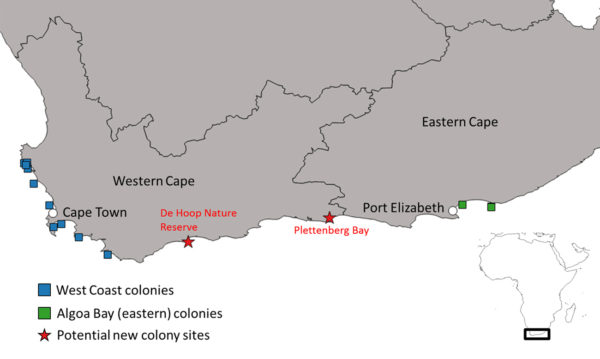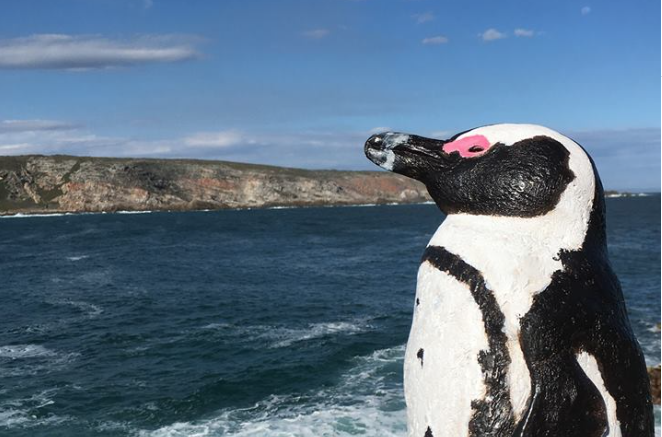Local scientists are attempting to convince Cape Town’s resident colonies of African penguins to migrate to other areas, such as De Hoop Nature Reserve, with the help of penguin decoys.
As the future of the African penguin remains unsure due to lack of prey, scientists have hatched a plan to convince these flightless sea birds to swim 232km from Cape Town to waters better suited to the colony.
With the help of local artist, Roelf Daling, BirdLife South Africa is convincing penguins with ultra-realistic concrete decoys to go to certain areas, due to penguins’ inherent tendency to gather in groups.
Can you spot the fake? The video above shows penguins being fooled by the faux feathered friend and settling in a comfortable spot beside it.
Daling delivered a small ‘colony’ of decoy penguins to BirdLife South Africa, and locals will be able to spot these imposters along the coast of De Hoop Nature Reserve.
This project forms part of the local organisation’s Creating Penguin Colonies project which investigates new ways to create penguin colonies, which will be protected from predators, on the south coast mainland. The aim is to create resilience in the penguin population by increasing the number of colonies and bridge the gap between the west and east populations.
How will new colonies be formed?
The new colonies will be established with the help of passive attraction and active translocation. For both of these options, the site needs to be protected from terrestrial predators by installing a predator-proof fence and other predator deterrent measures. The site also should look and sound like an established colony. To do this, decoys, call playback and mirrors will all be used to give the illusion of an established penguin colony in the area.
Nest boxes will be installed to create additional breeding habitat for the penguins. For passive attraction, this is all that is required. This option is more suitable for the De Hoop site as penguins have attempted to breed there in the past.
Active management is more likely to be in place at the Plettenberg Bay site, if approval is granted. Penguin chicks and/or juveniles will be released at the site over a period of several years. As penguins start breeding at three or four years of age, it will take a few years before any of them return to breed. The source of released birds has not yet been decided but will likely include wild chicks that were abandoned by their parents and hand reared.

Find out more about BirdLife South Africa’s plans here.
Pictures: Facebook/BirdLife South Africa/Christina Hagen

